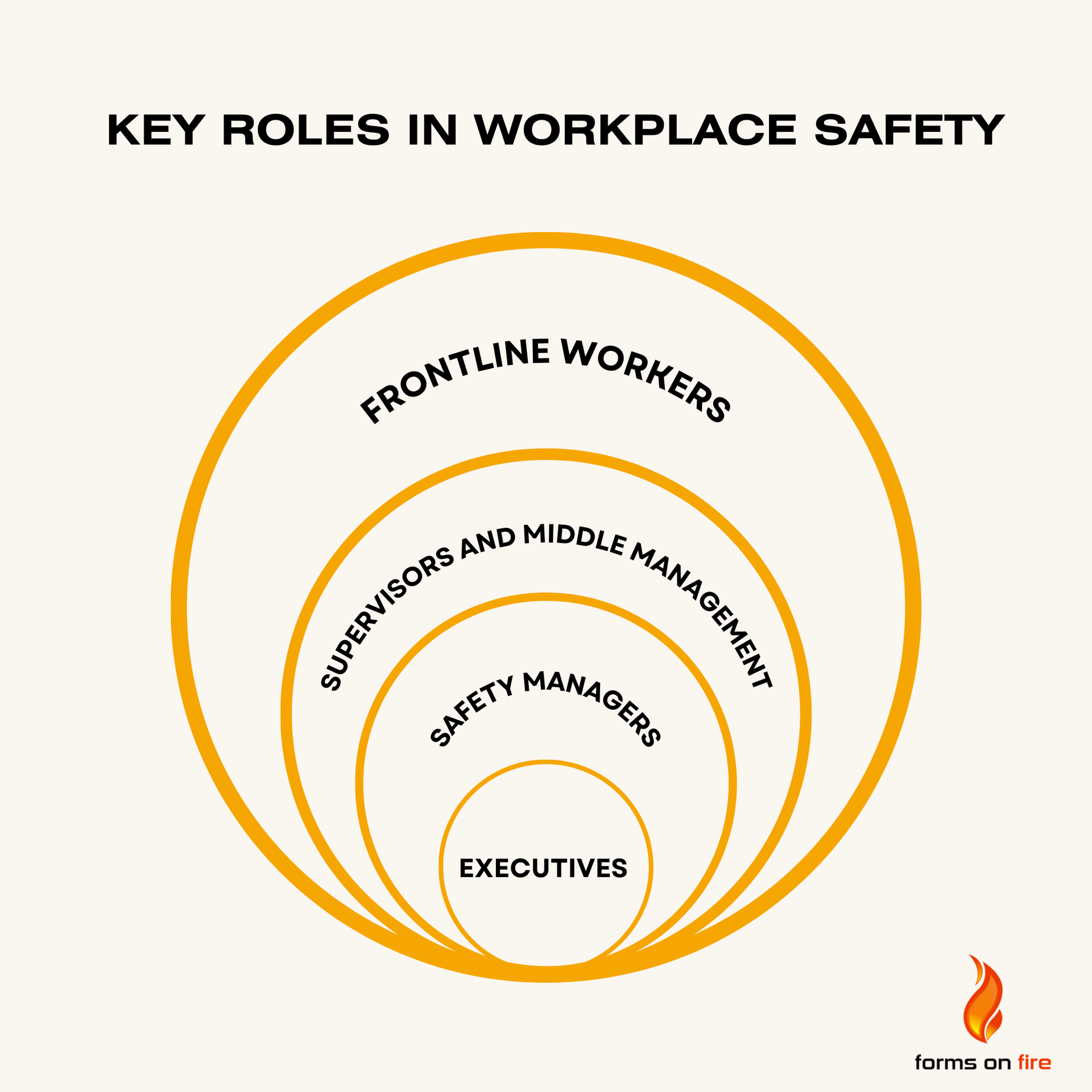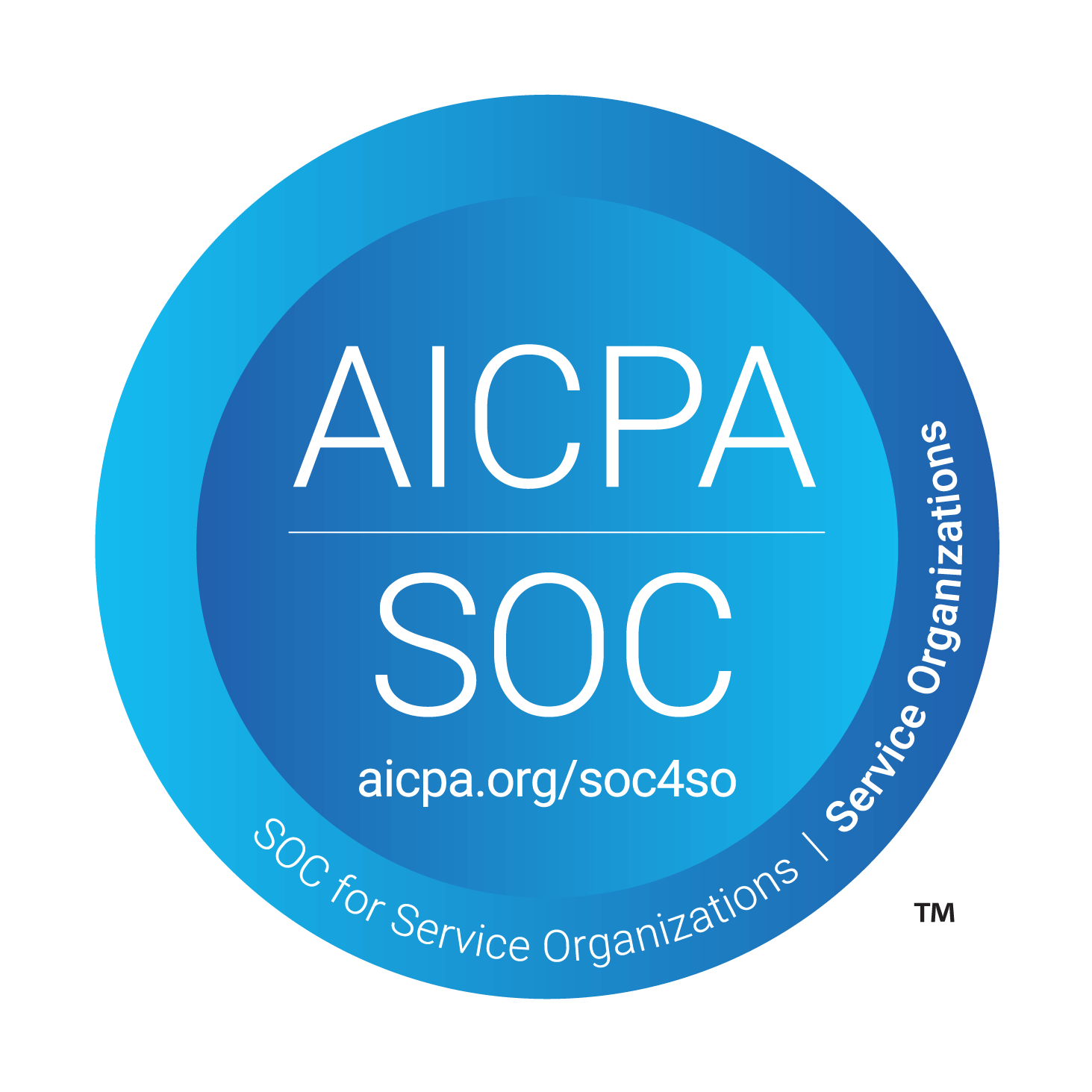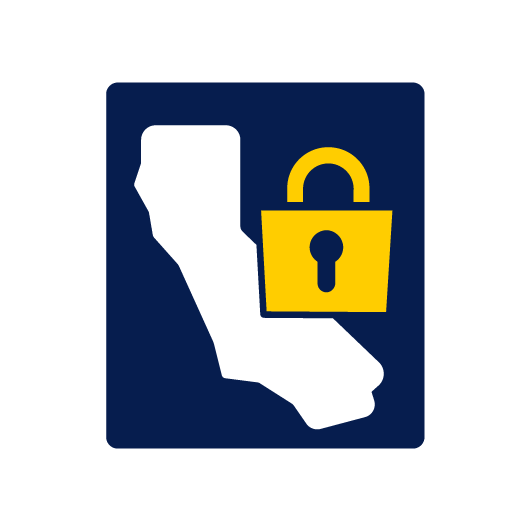Who is Responsible for Safety in the Workplace?
According to data from the U.S. Bureau of Labor Statistics, a worker died from a work-related injury every 96 minutes in the year 2022. If you expect your employees to show up every day and put their best foot forward for your business, showing them you prioritize their safety and well-being is a fundamental necessity. While the brunt of maintaining compliance and implementing safety protocols often falls on safety leads, creating a safe working environment is a feat that requires the active participation of everyone in the organization.
In this blog, we are answering one question: who is responsible for safety in the workplace? Keep reading to explore the breakdown of responsibilities among executive teams, safety managers, supervisors, and employees and learn what steps your business can take to improve workplace safety and mitigate risk at your organization.
Safety is a Shared Responsibility
If you ask who is responsible for safety in the workplace and expect a single person or team as the answer, it’s time to reframe. Safety in the workplace thrives on collaboration. Placing all the responsibility on designated safety personnel or upper management often leads to gaps in execution. Put all your eggs in one basket, and you’re going to be in trouble when someone drops the basket.
The reality of safety in the workplace is that everyone, from the CEO to the newest hire and even your temporary workers, has a role to play in creating a safe working environment. When you emphasize this distribution of accountability across all levels of the organization, you ignite a workplace safety culture that helps everyone become better equipped to address hazards, enforce safety protocols, and minimize risks.
Key Roles in Workplace Safety
Now that we’ve established the fact that employees at every level of the organization should be accountable for workplace safety in one way or another, it’s time to break down how that looks in practice. Here is how each level of your organizational structure should take responsibility for safety in the workplace:

The Executive Team
Executive teams set the tone for workplace safety. They are responsible for allocating resources, fostering a safety-first culture, and maintaining compliance with all applicable safety regulations. The impact of their actions trickles down, dictating the success or failure of the entire organization’s workplace safety initiatives.
Take the responsibility of providing adequate resources, for example. Safety programs require funding for equipment, training, and technology. Without financial backing, even the best-intentioned initiatives won’t get far off the ground.
Likewise, if executives don’t demonstrate commitment to workplace safety, the safety-first culture may not catch on. When they lead by example, they inspire the rest of the organization to prioritize safety. Executives need to engage with employees on safety issues by visiting job sites, attending safety briefings, and modeling the behaviors they want to see across the organization.
Analytics is another important responsibility at the executive level. Executives must monitor safety metrics like incident rates and training compliance and review the results regularly to help leaders spot areas that need improvement.
Safety Managers
Your safety managers are the backbone of your workplace safety programs. They are the architects creating the policies, writing and conducting employee training programs, and overseeing compliance.
The safety manager’s main responsibilities are conducting risk assessments, developing emergency action plans, and spearheading employee training programs. They
carry out safety audits and inspections and use the results to identify and mitigate potential hazards. They’re also in charge of preparing the entire workforce for emergencies like fires, natural disasters, and chemical spills. It’s up to the safety manager to make sure every employee knows what they need to do and where they must go in an emergency situation. The safety manager must also train employees on how to do their jobs in a safe, efficient way.
Safety managers wear a lot of hats, but their expansive expertise does not mean they can operate in isolation. A successful safety manager requires collaboration with all levels of the organization so that protocols are established and adhered to.
Supervisors and Middle Management
Under safety managers, we have supervisors and middle management. This level of the hierarchy bridges the gap between leadership and frontline workers. They are the ones enforcing safety policies on the ground every day. In other words, your supervisors are the reason your team members comply with the standards set by leadership.
One of the main responsibilities of supervisors and middle management is daily oversight. They watch employees, monitoring the use and state of personal protective equipment (PPE) as well as adherence to safety protocols.
Supervisors and middle management are also responsible for communicating the safety concerns of their employees with higher management and vice versa. When an employee feels a machine is unsafe, they can tell their supervisor, who will tell the safety manager. If the safety manager sees a pattern of incidents related to poor workspace hygiene while reviewing data, they inform supervisors to share this information with employees.
Supervisors and middle management directly oversee frontline workers. The resulting high level of visibility comes with the responsibility to lead by example. Supervisors must embody safety standards. If they break the rules, they undermine the importance of safety for their entire team. This is why promoting employees with strong safety records to supervisory positions can significantly improve compliance and reduce incident rates.
Frontline Workers
Frontline workers are the last line of defense between your workplace and its safety threats. These employees are directly exposed to the workplace hazards identified and mitigated by leadership, which makes their role in maintaining a safe workplace critical. While they may not create the policies, adhering to the safety protocols set by leadership is just as vital.
One way that frontline workers contribute to workplace safety is by using PPE consistently and effectively. Proper use of PPE has the power to prevent injuries and fatalities. It’s also crucial for maintaining compliance.
Frontline workers are also responsible for reporting hazards in the workplace, which requires them to stay vigilant. Because of this, supervisors and leadership should empower them to report any unsafe conditions without fear of retaliation.
Safety training participation is also foundational to your organization’s safety programs. When workers attend and engage in training sessions, they’re better prepared to handle emergencies and follow procedures. The education they receive in safety training could prevent injury or fatality if and when an emergency occurs.
Ultimately, a culture of accountability among workers helps ensure safety measures are upheld and respected on a daily basis.
Building a Safety-First Culture
As you can probably tell, effective workplace safety initiatives require businesses to prioritize fostering a culture of safety and accountability as shared values throughout the entire organization. Here are a few actionable strategies to help you achieve this at your workplace:
- Encourage open communication: Create communication channels for employees to report safety concerns or suggest improvements without fear of retaliation from above.
- Provide ongoing safety training: Regular safety training sessions keep employees updated on the latest workplace safety hazards, protocols, and best practices.
- Recognize safety achievements: Reinforce positive behavior by acknowledging teams and individuals who demonstrate good safety practices.
- Invest in technology: Streamline your incident reporting, risk assessments, and compliance tracking and assign responsibility using workplace safety software.
- Lead from the top: Take advantage of the trickle-down effect. When executives and supervisors actively participate in safety initiatives, it demonstrates organizational commitment.
How to Encourage Accountability
Accountability is undeniably one of the biggest challenges in workplace safety. Each individual must take ownership of their role, and commit to understanding how their actions impact not only themselves but also their colleagues. Here are a few tips to help organizations enforce accountability:
- Setting clear expectations: Job descriptions and onboarding materials should outline safety responsibilities.
- Implementing consequences: Consistent enforcement of rules, including disciplinary action for violations, highlights the importance of the rules and their consequences.
- Tracking metrics: Regular reviews of safety data help identify trends and hold teams accountable for safety performance.
The Cost of Neglecting Safety
Failing to prioritize workplace safety can have devastating consequences. Safety standards exist for a reason. Noncompliance inevitably leads to preventable accidents. Sometimes, those accidents result in injuries and even fatalities. Your employees devote hours of hard work to your organization each day. They don’t deserve to fear injury, death, or grief when they come to work each day.
Neglecting workplace safety doesn’t just harm your employees. It can also result in devastating financial losses and reputational damage. When injury or fatality occurs in your workplace, your company faces medical bills, insurance premium hikes, and expensive lawsuits. If dealing with the incident requires downtime, then there’s also the cost of lost productivity to consider. If your organization gains a reputation for its poor safety record, it will be a lot more difficult to attract and retain talent. After all, why would employees work for a company that neglects their well-being?
Wrapping Up
Workplace safety is a shared responsibility that requires commitment from every level of your organization. Executives are responsible for providing resources and setting the tone, safety managers are in charge of establishing and enforcing safety protocols, supervisors lead by example, and frontline workers drive the safety initiative home by adhering to safety standards. If you prioritize fostering a workplace safety culture of accountability and collaboration, you can create an environment where proper workplace safety is second nature.
Want to learn how to streamline your workplace safety initiatives by assigning roles and automating notifications with Forms on Fire?
Try it free today.




